Bonnet Springs Park to be a New Central Park for Lakeland, FL
"Great cities have a great park." Creating a special public place out of underutilized, industrial land for the whole Lakeland, Florida community to enjoy
 Sasaki
Sasaki
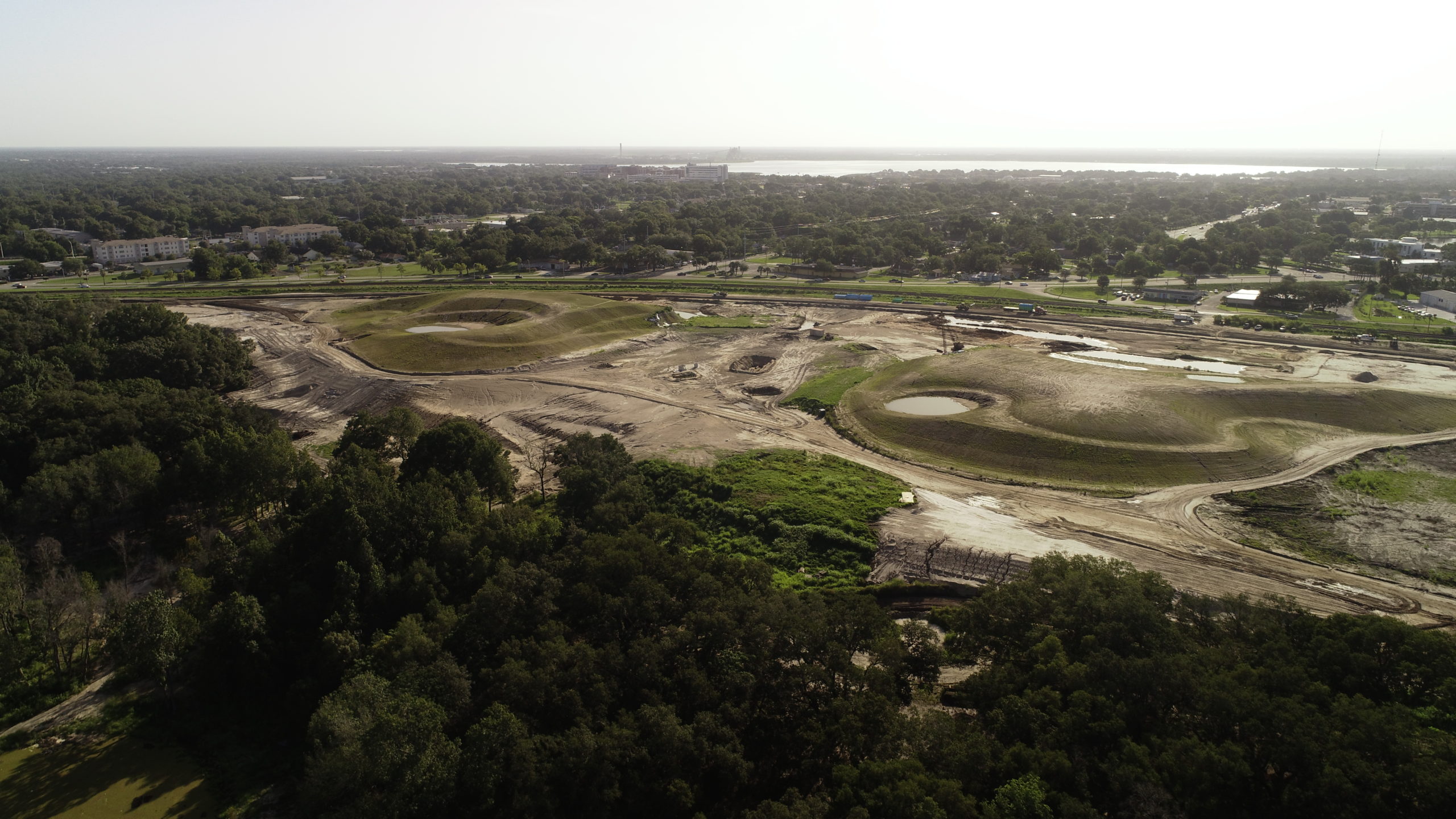
In Lakeland, Florida, Sasaki is transforming an abandoned railyard into a thriving central park for Lakeland. The construction of Bonnet Springs Park will restore the site to a condition where natural species can thrive, leaving the community with not only a park, but an ecological jewel, a cultural magnet, and connected community asset.
The site was a functioning railyard in the early 1900s and played a vital role in moving, storing, and repairing the coal-powered locomotives that fueled the region’s economy. After the railyard closed in 1952, the land on which it sat was abandoned. Recognizing that metro Lakeland is one of the fastest growing regions in the country, a group of Lakeland enthusiasts proposed the creation of Bonnet Springs Park at the abandoned site.
Beginning in 2018, Sasaki has worked with the Bonnet Springs Park board to create and implement a master plan for the park. The master plan includes a diversity of buildings and park programs, including nature-based playgrounds, ecological restoration areas, a nature center, heritage and botanical gardens, event venues, a children’s museum, grand hills with skyline overlooks, treatment wetlands, bridges, lagoons, and a canopy walk. Sasaki is currently conducting construction administration for the entire project, which is being built as a single phase. As the project completes its first steps, Sasaki designers explain the interventions necessary to turn the site into an ecologically healthy destination.
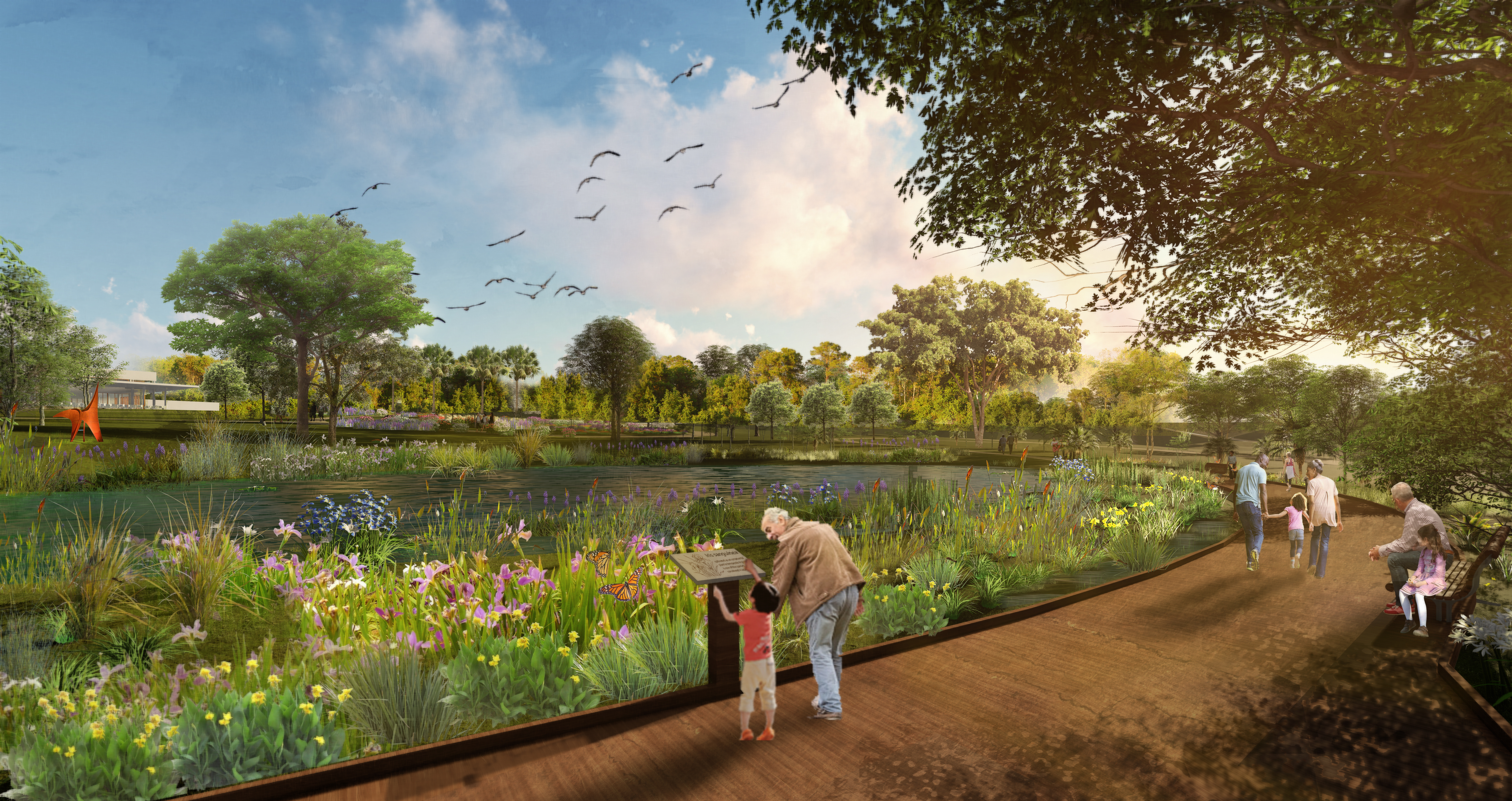
A vision for Bonnet Springs Park
One of the first steps in preparing the site involved addressing its contamination. The site is covered by over 250,000 cubic yards of contaminated soil that contains high levels of arsenic—a byproduct of herbicides commonly used along rail corridors.
Sasaki’s design for Bonnet Springs Park includes sculpting the site from a flat and barren expanse into an undulating series of hills and depressions that block ambient noise, direct breezes, and create a sense of discovery. This approach is both imaginative and practical, since the hills provide a safe and economical way to cover the contaminated soil. Working closely with regulatory agencies and our environmental consultant, Geosyntec, the design team developed a data-driven remediation strategy that matched cleanup targets with proposed uses for the site and eliminated the need to export fill. The project is also enrolled in the Florida Department of Environmental Protection’s Voluntary Cleanup Tax Credit program, which is designed to encourage land owners to remediate sites that are considered “brownfields” due to the presence of contaminants.
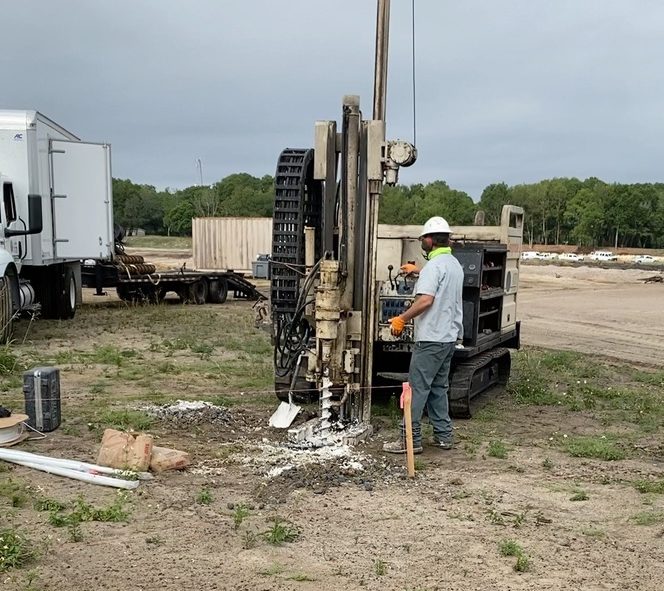
Soil boring at the site
A large portion of the site required extensive site remediation to eliminate arsenic and petroleum contaminants. In addition, Lake Bonnet and the nearby natural springs were among the most heavily polluted and disturbed watersheds in Lakeland. This was in part due to both the site’s contamination, but a more significant contributor is the more than 200 acres of off-site urban runoff from the adjacent highway and neighborhoods that flow through the park. As this water has flowed through the site over the years, it scoured and destabilized the banks within the spring corridor, and introduced significant levels of nitrate, phosphates, hydrocarbons, turbidity, and trash into the spring corridor and lake. Additionally, heritage trees along the banks had root crowns exposed, and in some cases toppled into the stream bed, occasionally damming and causing flooding in the corridor.
Sasaki completely re-engineered the existing stormwater system, using a diverse range of green infrastructure strategies to capture, redirect, and mitigate the on-site and off-site watersheds. The new hydrological regime diverts the drained water into a new pipe and brings it to a lagoon, preventing erosion of the spring corridor. The first flush of contaminated stormwater is diverted from this pipe to provide stormwater treatment on its way to Lake Bonnet. This runoff is routed through a structural treatment device for debris removal and primary treatment before being released within the Botanical Garden, first into an armored forebay, then through a winding wet meadow composed of a mix of native and adapted species designed to slow the water, absorb nutrients, and facilitate hydrocarbon biodegradation. This water passes through a swale and into a primary settlement pond, which also serves as an accent within the gardens. The water is piped to a new retention lagoon at the foot of the sloping woodland to minimize impact to existing heritage trees. The lagoon is a nearly 7-acre basin where the water can decelerate, settle, and percolate through a 1,300-linear-foot edge of forested wetlands before being released into Lake Bonnet.
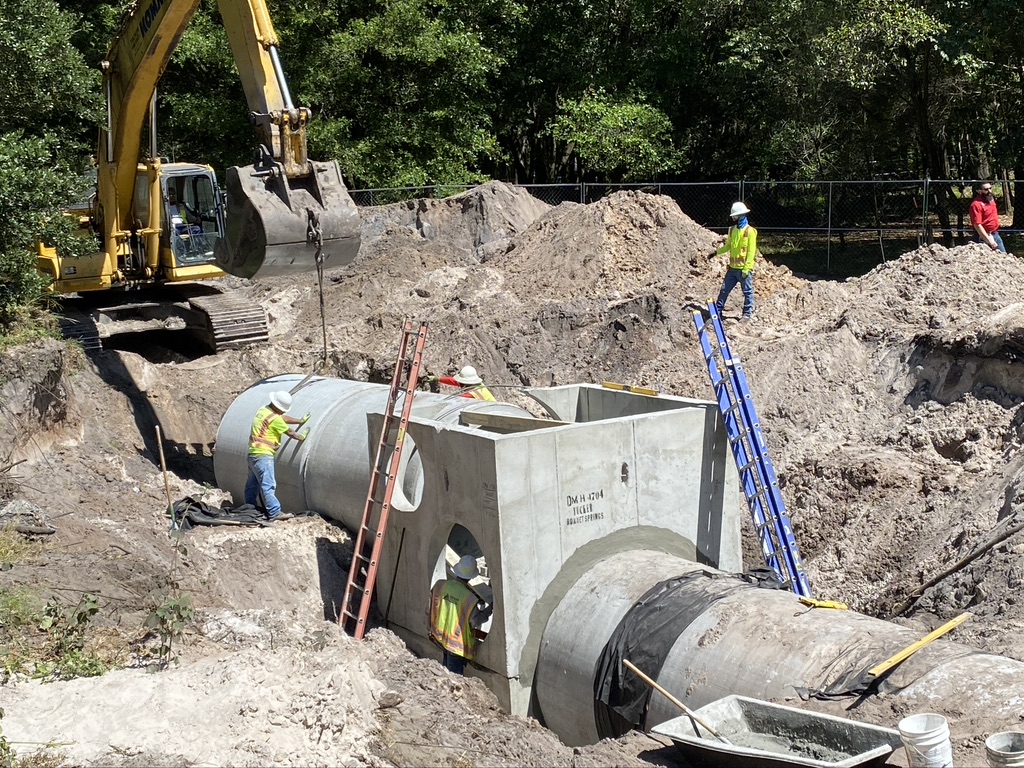
Installation of stormwater piping to divert water away from the vulnerable spring corridor
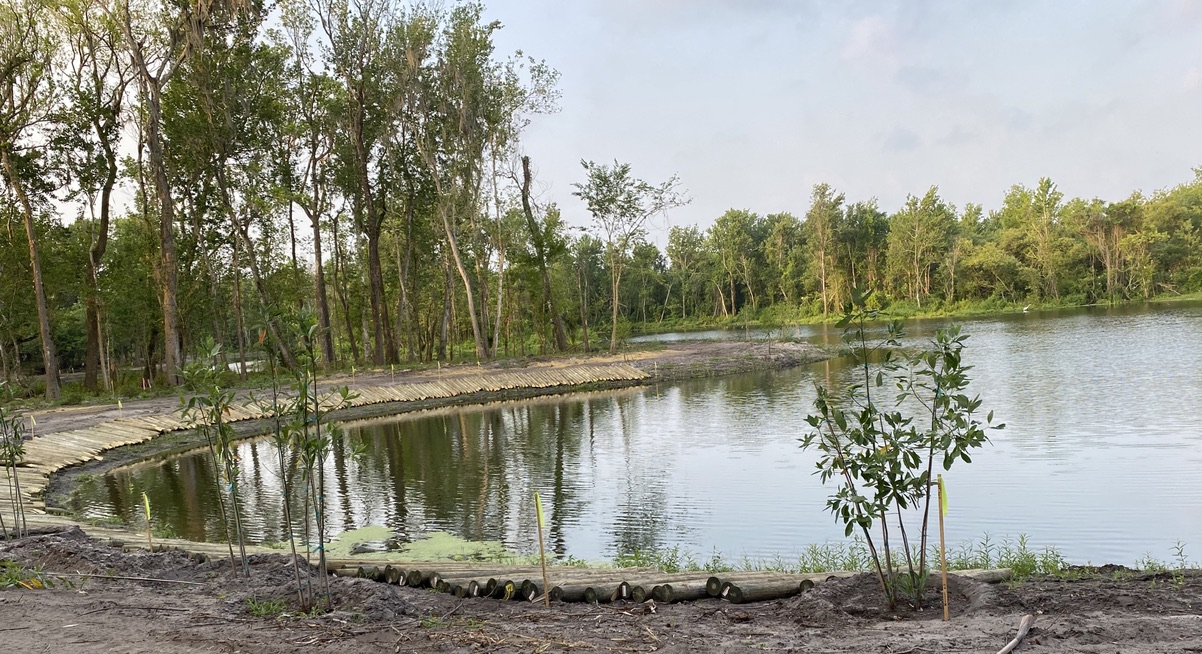
Stabilization of the lagoon edge with planting and a timber retaining wall
The development of this plan required diverse regulatory authority approval, including Florida Department of Transportation, the City of Lakeland, and the Southwest Florida Water Management District. Upon completion, the new watershed will provide a clean recharge of water to Lake Bonnet, and along with the native species design, over time will contribute to a healthy spring-fed riparian corridor and an enhanced habitat, a boon for the park as well as the adjacent neighborhoods that front on the west end of the lake.
Learn more about stormwater management systems on the EPA’s website. Read more about Bonnet Springs Park here.